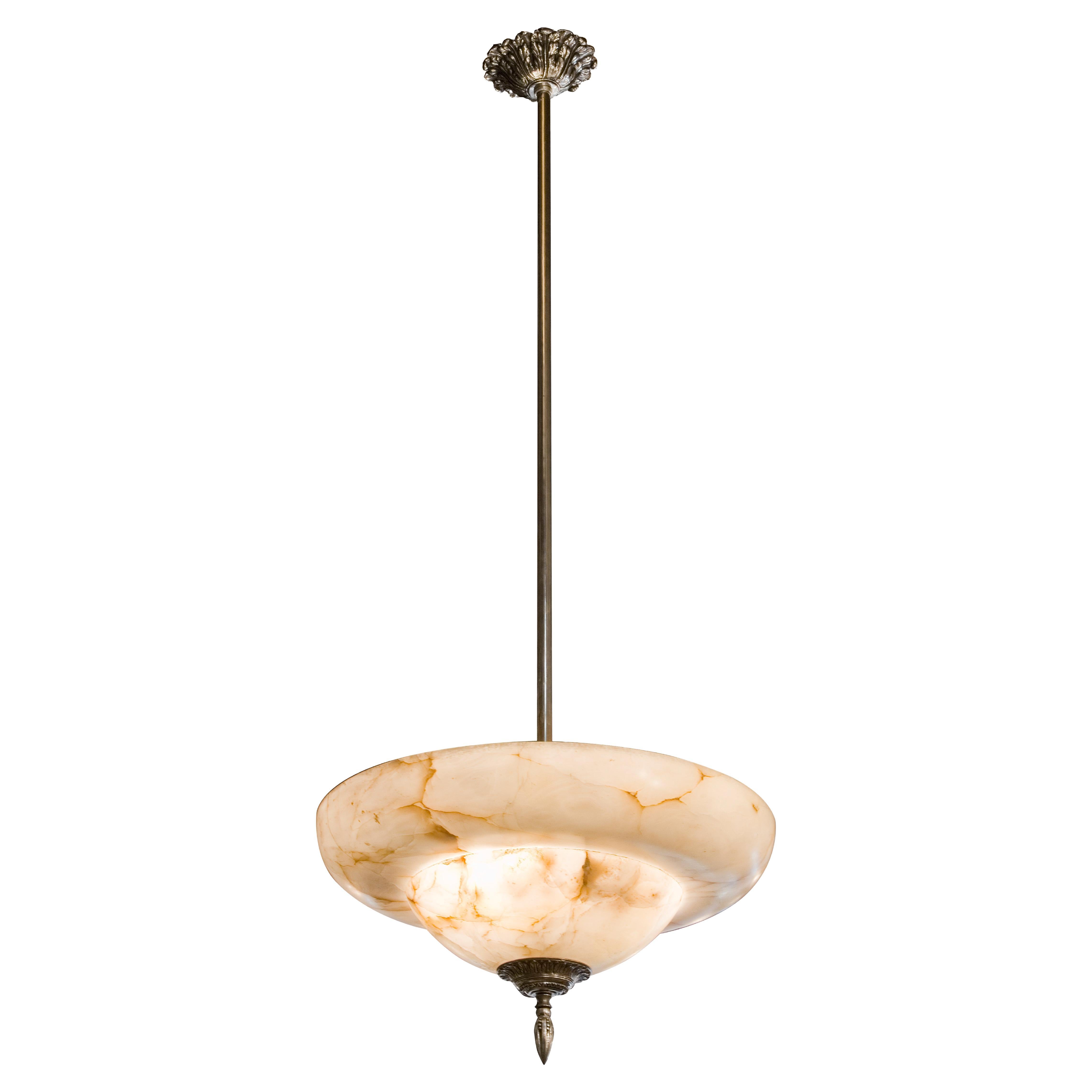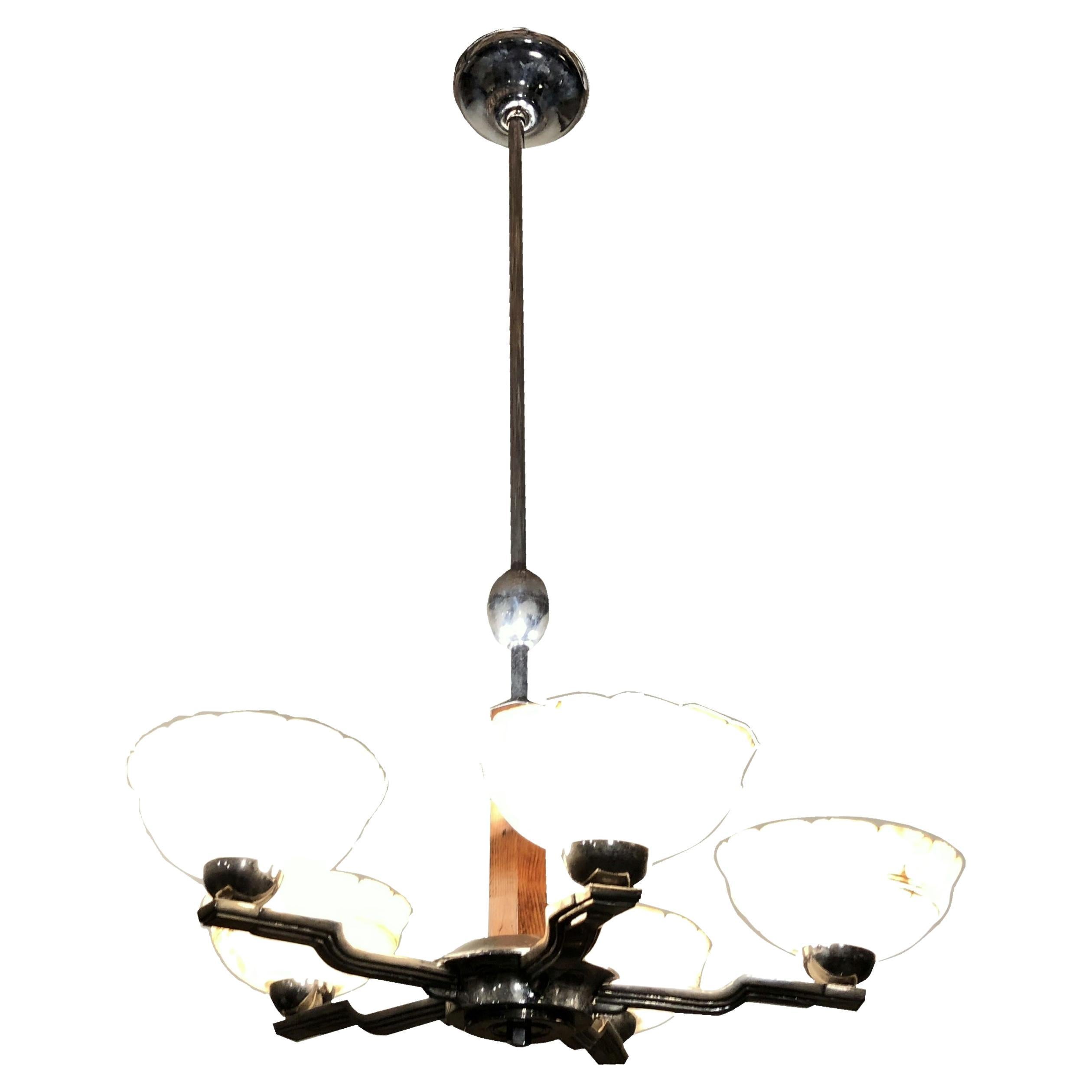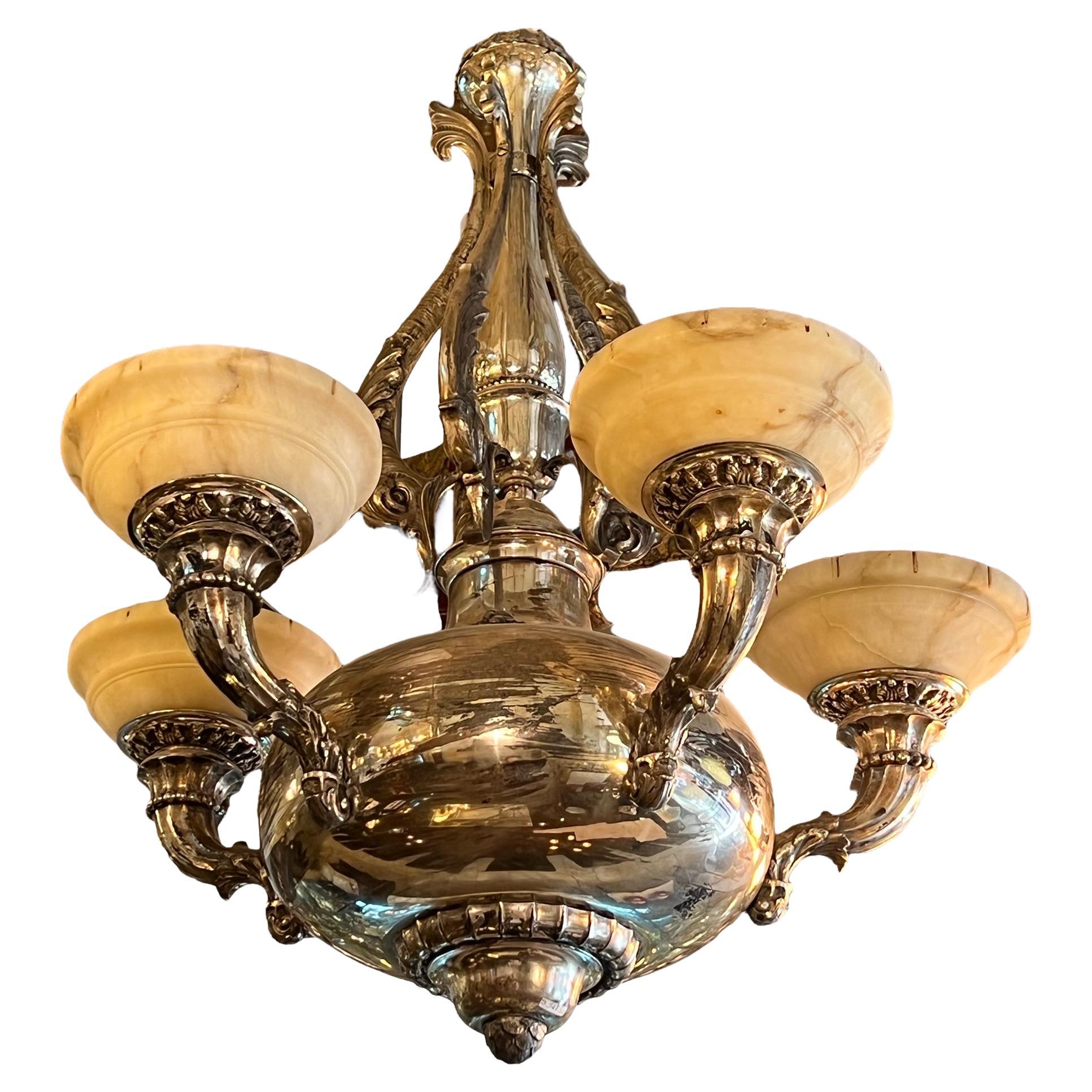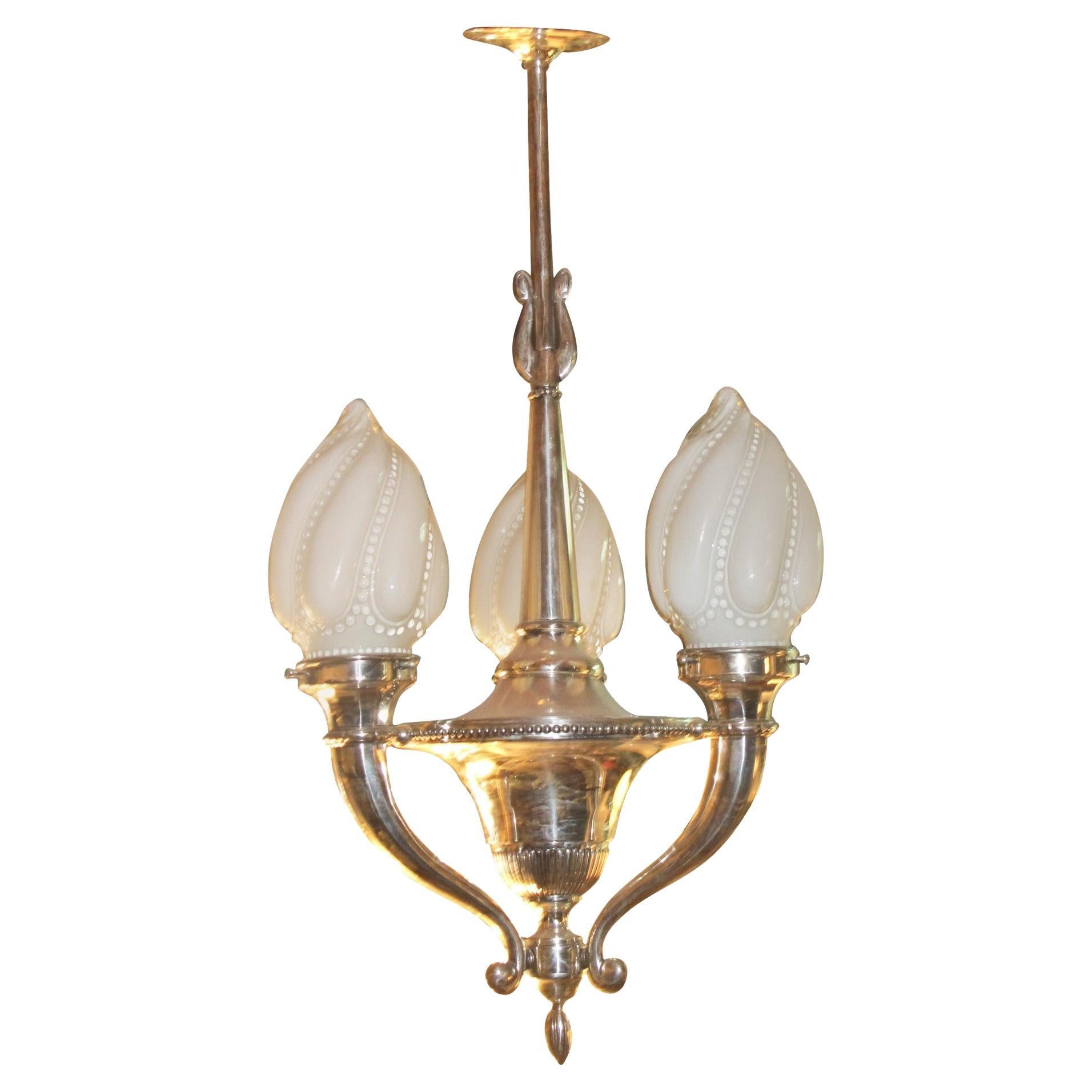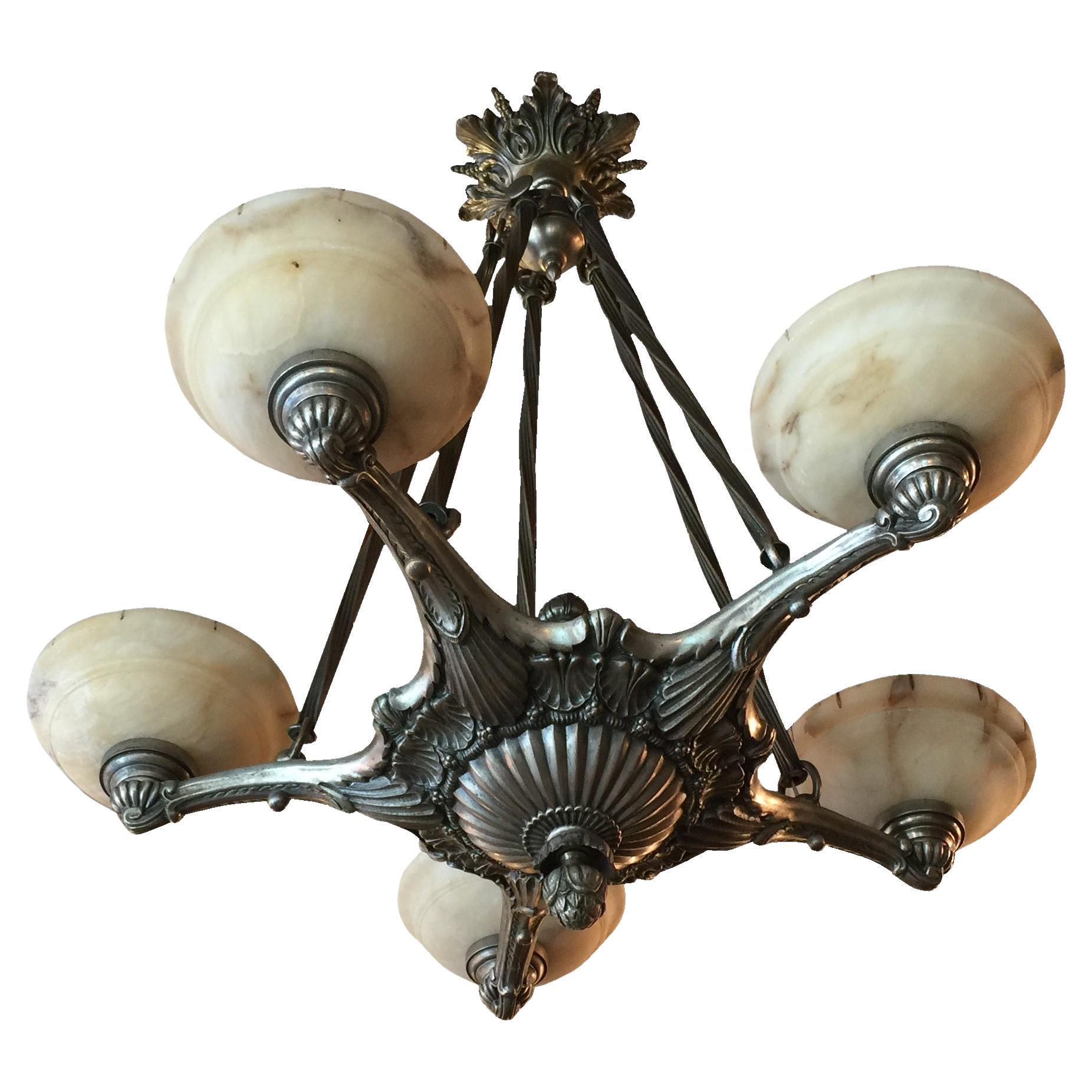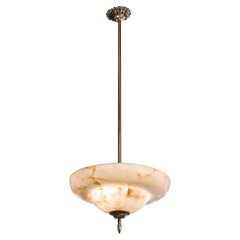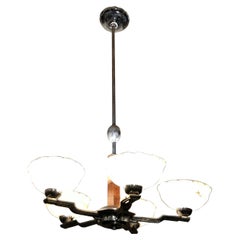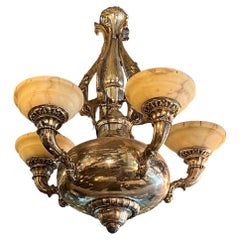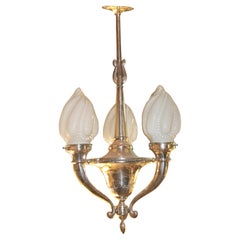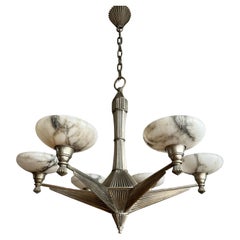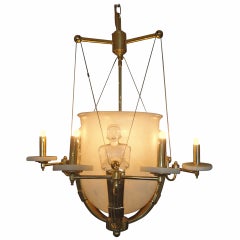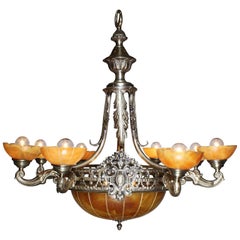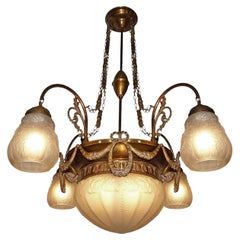Articles similaires à Amaizing Chandelier in Alabaster and silver plated bronze, Art Deco Style, 1920
Chargement de la vidéo
Vous voulez plus d'images ou de vidéos ?
Demander au vendeur plus d'images ou de vidéos
1 sur 20
Amaizing Chandelier in Alabaster and silver plated bronze, Art Deco Style, 1920
26 096,23 €
À propos de cet article
Amazing chandelier Art Deco
If you have problems to the hight, We can cut the barral, at the indicated height (free of charge)
Style: Art Deco
Year: 1920
Material: Alabaster and silver plated bronze
To take care of your property and the lives of our customers, the new wiring has been done.
If you want to live in the golden years, this is the lighting that your project needs.
We have specialized in the sale of Art Deco and Art Nouveau styles since 1982.If you have any questions we are at your disposal.
If you are looking for sconces to match your ceiling lighting, we have what you need.
Pushing the button that reads 'View All From Seller'. And you can see more objects to the style for sale.
Why are there so many antiques in Argentina?
In the 1880 – 1940 there was a grate wave of immigration encouraged by the periods of war that were taking place.
1st World War took place between 1914 and 1918
2nd World War took place between 1939 and 1945
The immigrants options were New York or Buenos Aires. Tickets were cheap and in Buenos Aires they were welcomed with open arms, as it was a country where everything was still to be done.
Argentina was the country of new opportunities, labour was needed and religious freedom was assured, in many cases the of the family travel first until they were settled and then the rest of the family members join them.
In the immigrant museum “Ellis Island Immigrant Building” in New York you can se the promotional posters of the boats that would take them to a new life.
Between the years 1895 and 1896, Argentina had the highest DGP (gross domestic product) per capita in the world according to the Maddison Historical Statistics index, this situation arose due to the large amount of food being exported to European countries, which were at war.
The Argentinean ships left the port of Buenos Aires with food, but they returned with furniture, clothes and construction elements, (it´s common to see this the old buildings of the historic neighbourhood of San Telmo, the beams with the inscription “Made in England)”, as well as many markets that were built in Buenos Aires, such us the San Telmo Market, whose structure was brought by ship and afterwards assembled in 900 Defensa Street.
With the great influence of European immigrants living in the country, the children of the upper classes travelled to study in France, resulting in the inauguration of “La Maison Argentinienne”, on 27th of June 1928, in the international city of Paris, which hosted many Argentinians that were studying in Frace.
It´s the fourth house to be built after France, Canada and Belgium, being the first Spanish-speaking one. Still in place today (17 Bd Jourdan, 75014, Paris, France). Many of the children of these wealthy families who attended international art exhibitions, museums and art courses abroad, took a keen interest in the European style. This is why Buenos Aires was at the time referred as “The Paris of South America”.
Between the years 1890 and 1920 more than a hundred Palaces were built on Alvear Avenue the most exclusive avenue in Buenos Aires. Today some of these palaces have been transformed into museums, hotels and embassies.
In the year 1936, the Kavanagh building was inaugurated, it was the tallest reinforced concrete building in South America.
During 1994 the American Society of Civil Engineers distinguished it as an “international engineering milestone”, and it´s now considered a World Heritage of Modern Architecture.
At the time was common to hire foreign architects such as Le Corbusier, who visited Buenos Aires/Argentina in 1929 and in 1948 he drew up the blueprints for a house built in La Plata City (which was declared a World Heritage Site).
In 1947, the Hungarian architect Marcelo Breuer designed “Parador Ariston” in the seaside city of Mar del Plata. After an Argentinean student at Harvard University convinced him to come to Argentina. He worked on an urban development project in the Casa Amarilla, area of La Boca.
The Ukrainian architect, Vladimiro Acosta, arrives in Argentina in 1928 and worked as an architect until que moved to Brazil.
Antonio Bonet, a Spanish architect who worked with Le Corbusier in Paris, arrives in Argentina in 1937, where he carried out several architectural works and in 1938 designs the well-known BFK chair.
Andres Kálnay, of Hungarian origin, made around 120 architectural masterpieces, among which the former Munich brewery stands out, he even made the furniture’s design.
The German architect, Walter Gropius, director of the Bauhaus, lived in Argentina, where he wrote articles for “Sur” magazine and founded in Buenos Aires, an architectural firm with Franz Möller, who was also an architect, where he built two houses.
At the same time several famous designers decided to immigrate to Argentina, among them we can find the well-known French designer, Jean-Michel Frank, who arrived in the country in 1940 and also worked for the Rockefeller family.
Special pieces were made, which were sold exclusively in the country, such as the well-known German company “WMF”, who sold their products by catalogue, which were chosen by the ladies of high society in the list of wedding gifts, as well as the pieces designed by Christofle.
The Swiss sculptor Alberto Giacometti, made special pieces for Argentinean mansions.
In 1904 the first Jansen branch outside Paris was established in Buenos Aires, as the Argentinean clientele demanded a large amount of furniture, from the end of the 19th century to the mid-20th century.
In 1970, the brand Rigolleau Argentina made pieces authorised by Lalique.
The brands Maple and Thompson also set up shop in the country.
The French plastic artist, Marcel Duchamp moved to Argentina in 1918-1919.
Glass signed Gallé, Charder, Leverre, Schneider, Muller and other French firms. They were bought in flower shops and were given to ladies with beautiful floral arrangements.
Some furniture manufacturers travelled to international fairs and bough the patterns to produce the furniture in Argentina, such as the furniture firm Englander and Bonta, who bought the patterns ins Italy.
It is worth mentioning that in Argentina we have the largest community of Italians outside of Italy, as it is estimated that 70 percent of the inhabitants have at least one Italian descendant, followed by Spanish immigrants.
The most Important furniture stores in Argentina:
Comte is founded in 1934 (under the direct management of Jean Michel Frank in 1940).
Nordiska (Swedish company established in 1934).
Churba in 1960, a company that brought foreign designers to present their furniture in the country:
Denmark: (Arne Jacobsen, Finn Juhl, Bender Madsen, Ejner Larsen, Poul Kjaerholm, Hans Wegner)
Sweden: (Hans Agne Jakobsson, Gustavsberg)
United States: (Herman Miller)
Finland: (Lisa Johansson, Folke Arstrom, Tapio Wirkkala, Alvar Aalto, Timo Sarpaneva)
Swedish Factory: (Orrefors)
Italy: (Littala, Vico Magistretti, Emma Gismondi, Gae Aulenti, Angelo Mangiarotti, Elio Martinelli, Gianna Celada, Angelo Mangiarotti, Mario Bellini, Carlo Scarpa)
Finland: (Olivia Toikka)
Plata Lappas (Lappas Silver): a goldsmith shop founded in 1887 in Argentina by Alcibiades Lappas of Greek origin.
In 2019, in Argentina took place “the Art Deco world congress”, in which we participated as hosts invited by Geo Darder, founder of the Copperbridge – Foundation, in which prominent people from all over the world attended to learn about Art Deco in Argentina.
Argentina currently has more than 100 Art Deco buildings and another 90 Art Nouveau buildings throughout the city of Buenos Aires.
Argentina is a country that has not been involved in many wars, which is why it has been a refuge for works of art and antiques from different periods of time, unlike European countries. That is way many collectors, museums and antique dealers from all over the world visit it, you should not miss the opportunity to visit this great country.
Laura Guevara Kjuder, architect.
- Dimensions:Hauteur : 153 cm (60,24 po)Diamètre : 60 cm (23,63 po)
- Source d'alimentation:Prise secteur
- Voltage:220-240v
- Abat-jour:Inclus
- Style:Art déco (Dans le style de)
- Matériaux et techniques:
- Lieu d'origine:
- Période:
- Date de fabrication:1920
- État:Recâblé: To take care of your property and the lives of our customers, the new wiring has been done. Usure conforme à l'âge et à l'utilisation.
- Adresse du vendeur:Ciudad Autónoma Buenos Aires, AR
- Numéro de référence:Vendeur : L-HL-1stDibs : LU6785245346952
À propos du vendeur
5,0
Vendeur professionnel agréé
Chaque vendeur répond à des normes strictes en matière d'authenticité et de fiabilité
Établi en 1982
Vendeur 1stDibs depuis 2022
40 ventes sur 1stDibs
Temps de réponse habituel : <1 heure
- ExpéditionRecherche du devis...Expédition depuis : Ciudad Autónoma Buenos Aires, Argentine
- Politique des retours
Certaines parties de cette page ont été traduites automatiquement. 1stDibs ne garantit pas l'exactitude des traductions. L'anglais est la langue par défaut de ce site web.
Garantie d'authenticité
Bien qu'il soit peu probable que la situation se présente, dans le cas où vous rencontreriez un problème d'authenticité d'un article, contactez-nous dans un délai d'un an pour obtenir un remboursement intégral. DétailsGarantie de remboursement
Si votre article n'est pas conforme à la description, est endommagé pendant le transport ou ne vous est pas livré, contactez-nous sous 7 jours pour obtenir un remboursement intégral. DétailsAnnulation sous 24 heures
Vous disposez d'un délai de 24 heures pour annuler votre achat sans motif.Des vendeurs professionnels agréés
Nos vendeurs de renommée mondiale doivent respecter des normes strictes en matière de service et de qualité, afin de préserver l'intégrité de nos fiches produit.Garantie d'alignement des prix
Si vous constatez qu'un autre vendeur a mis en vente le même article à un prix inférieur sur un autre site, nous nous alignerons sur ce prix.Livraison en toute confiance à l'international
Notre réseau de transporteurs de premier ordre propose des options d'expédition spécialisées dans le monde entier, y compris des livraisons personnalisées.Plus d'articles de ce vendeur
Tout afficherLustre en albâtre et bronze plaqué argent, style Art déco, année : 1920
Lustre en albâtre.
Style : Art Déco
Année : 1920
MATERIAL : Albâtre et bronze argenté
Pour prendre soin de votre propriété et de la vie de nos clients, le nouveau câblage a été effe...
Catégorie
Vintage, années 1920, Français, Art déco, Lustres et suspensions
Matériaux
Albâtre
Lustre Amaizing en albâtre, bois et chrome, style Art déco, 1935
Superbe lustre Art Déco (lumière d'albâtre).
Style : Art Déco
Année : 1935
Matériau : Albâtre et chrome
Pour prendre soin de votre propriété et de la vie de nos clients, le nouveau ...
Catégorie
Antiquités, années 1830, Français, Art déco, Lustres et suspensions
Matériaux
Albâtre, Chrome
Lustre Art Déco 1930 en bronze plaqué argent et albâtre
Style : Art Déco
Année : 1930
MATERIAL : bronze argenté et albâtre.
Pour votre sécurité et celle de votre propriété, tous nos éclairages sont équipés de nouveaux câbles électriques. ...
Catégorie
Vintage, années 1930, Français, Art déco, Lustres et suspensions
Matériaux
Albâtre, Bronze
Lustre Art Déco en opaline et bronze plaqué argent, 1930
Style : Art Déco
Année : 1935
MATERIAL : opaline et bronze argenté
Pour votre sécurité et celle de votre propriété, tous nos éclairages sont équipés de nouveaux câbles électriques. ...
Catégorie
Vintage, années 1930, Français, Art déco, Lustres et suspensions
Matériaux
Bronze
Lustre Art Déco 1930 en bronze plaqué argent et albâtre
Style : Art Déco
Année : 1930
MATERIAL : bronze argenté et albâtre.
Pour votre sécurité et celle de votre propriété, tous nos éclairages sont équipés de nouveaux câbles électriques. ...
Catégorie
Vintage, années 1930, Français, Art déco, Lustres et suspensions
Matériaux
Albâtre, Bronze
Lustre Amaizing en albâtre et chrome, style Art Déco, 1935
Lustre Art Déco (lumière d'albâtre)
Si vous avez des problèmes de hauteur, nous pouvons couper le barral à la hauteur indiquée (gratuitement).
Style : Art Déco
Année : 1935
MATERIA...
Catégorie
Antiquités, années 1830, Français, Art déco, Lustres et suspensions
Matériaux
Albâtre, Chrome
Suggestions
Lustre Art déco en bronze argenté et six abat-jour en albâtre, 1920
Ce lustre Art déco unique, de bonne taille et agréable à regarder, se distingue pour plusieurs raisons :
Tout d'abord, il possède un superbe "corps" en bronze argenté en excellent état.
Ensuite, son design Art déco parfait en fait un véritable plaisir à posséder et à regarder. Grâce à son design remarquable, il trouvera également sa place dans les intérieurs MidCentury et même dans les intérieurs contemporains. Qu'il soit allumé ou éteint, ce lustre moderniste est un véritable régal pour les yeux et ne ressemble à rien de ce que vous avez déjà vu.
Troisièmement, ce design géométrique rayé unique est intégré dans toutes les parties de cette suspension étonnante, du baldaquin au sommet jusqu'à l'épi de faîtage à la base. Créer un tel design sur le papier est une chose, mais trouver le bon studio/artisan pour exécuter un tel design est au moins aussi difficile, mais ils ont manifestement réussi à le faire.
Quatrièmement, les rayures subtiles des teintes d'albâtre les rendent parfaites pour ce design rare et elles créent une lumière chaude et atmosphérique sans pareille.
Enfin, ce design unique offre un aspect et une sensation incroyablement élégants et sereins et, grâce à son équilibre parfait, il ne manquera jamais d'impressionner.
Cette suspension Art déco des années 1920 pourrait être parfaite pour éclairer votre salon, votre entrée ou peut-être votre chambre principale ou votre cuisine. Il est recâblé selon les normes les plus strictes pour une utilisation sûre et immédiate dans le monde entier et, grâce au crochet métallique situé à l'intérieur de l'auvent au design assorti, fixer ce lustre en toute sécurité à votre plafond est également un jeu d'enfant. Ce superbe pendentif Art Deco...
Catégorie
Début du 20ème siècle, Européen, Art déco, Lustres et suspensions
Matériaux
Albâtre, Bronze
Lustre Art Déco en albâtre et laiton
Lustre de style Art Déco en albâtre et laiton
Catégorie
Fin du 20e siècle, Inconnu, Art déco, Lustres et suspensions
Matériaux
Albâtre, Laiton
1 322 € Prix de vente
71 % de remise
Lustre Art Déco français du début du XXe siècle en bronze argenté et albâtre
Lustre Art Déco français du début du 20e siècle en bronze argenté et albâtre sculpté couleur caramel à huit lumières. Le cadre en bronze argenté percé, suspendu par quatre croisillon...
Catégorie
Début du 20ème siècle, Français, Art déco, Lustres et suspensions
Matériaux
Albâtre, Bronze
5 880 € Prix de vente
20 % de remise
Grand lustre français Art Déco et Art Nouveau avec guirlandes en laiton et verre dépoli
Par Degué
Magnifique lustre français Art Déco et Art Nouveau en verre dépoli, à 5 lumières/ laiton avec guirlandes.
Patine d'âge
Cinq ampoules (quatre ampoules E14 40W et une ampoule E27 60...
Catégorie
Début du 20ème siècle, Français, Art déco, Lustres et suspensions
Matériaux
Laiton
Lustre Art Déco en bronze argenté et albâtre du début du 20e siècle.
Lustre à quatre lumières en bronze argenté et en albâtre sculpté de couleur caramel, datant du début du 20e siècle. Le cadre en bronze argenté ajouré, suspendu par quatre entretoises...
Catégorie
Début du 20ème siècle, Français, Art déco, Lustres et suspensions
Matériaux
Albâtre, Bronze
Lustre Art déco à trois lumières en albâtre et laiton, années 1930
Lustre Art Déco en albâtre et laiton à trois lumières, années 1930.
Cet élégant lustre des années 1930 présente un corps oviforme en laiton foncé avec trois bras, chacun doté d'un be...
Catégorie
Vintage, années 1930, Allemand, Art déco, Lustres et suspensions
Matériaux
Albâtre, Métal, Laiton
